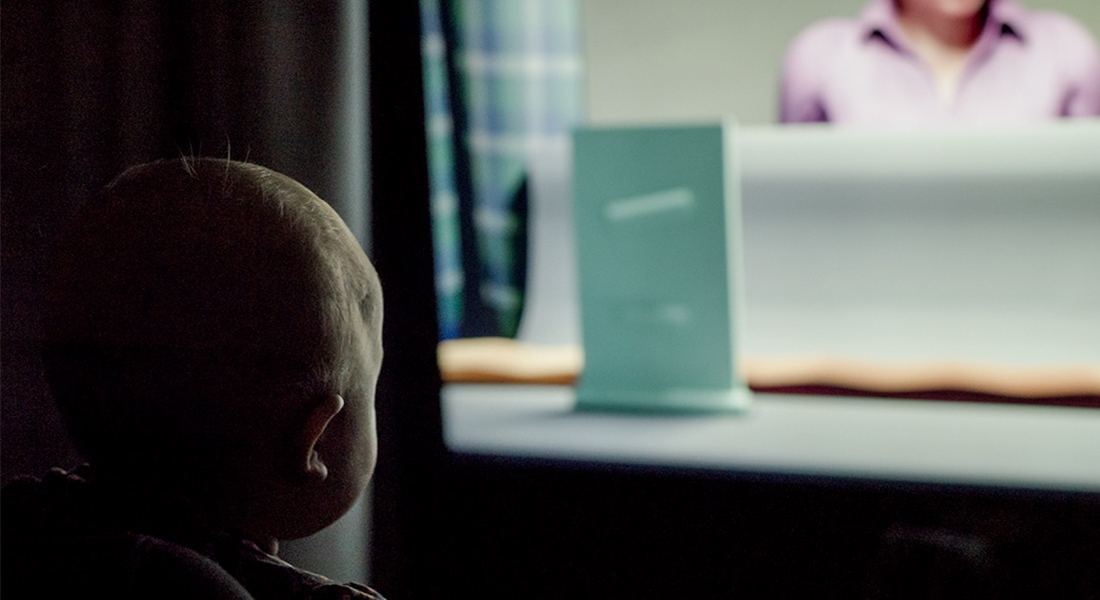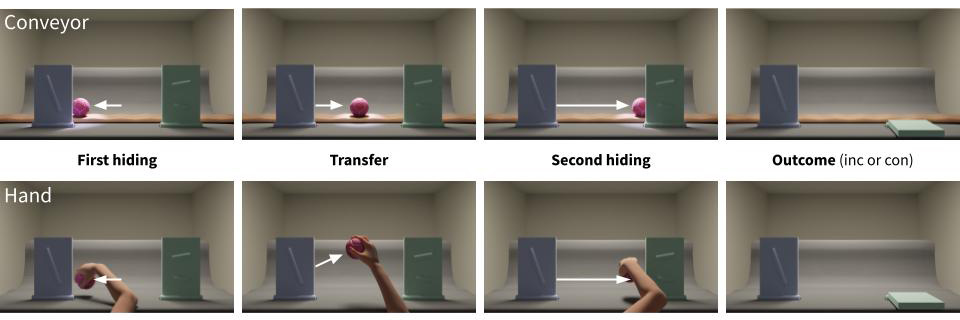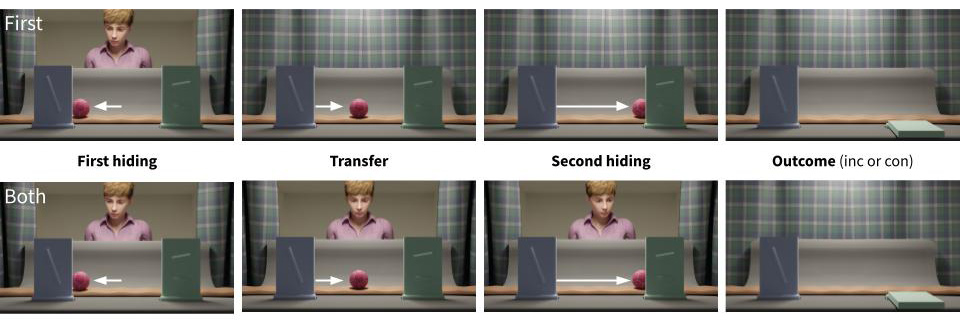Altercentric bias in preverbal infants’ memory
In this study we expect infants, in a very particular type of situation, to show a specific memory error that shows us that when they see someone else paying attention to something, their minds consider that particular part of their environment extremely worth learning.

First, we needed to make sure that 8-month-old infants remember the location of an object at all, if it stays a bit in one location and then it is moved to a new one. We used an animated hand to place the ball in the first location and then to transfer it to the second location. We also had another, completely non-social, variant of this study where a conveyor-belt transported the ball in order to make sure that infants don’t attribute attention to the hand. At the end, we reveal either the first or the second location, both empty, and expect infants, if they remember where the ball was, to look longer to the magical disparition. Indeed, the two groups of 32 babies each showed evidence of remembering the correct location of the ball, and the way the ball was transported didn't make any difference.

Next we use the conveyor-belt layout for our crucial experiment: while the ball is transported to its first location, an animated character in the background pays attention to the hiding event. Then we cover the character and babies watch the relocation of the ball like in the previous non-social study. As we predicted, infants misremembered the ball in the first location although they can well it being placed into the second. But we did yet another experiment — a control condition — where the animated character is present and attends to both hiding locations. To our surprise, the data showed that infants don’t seem to remember one location better than the other.

Reasoning that maybe now infants find both locations valuable, we made two new versions of the study where the character is revealed later and only witnesses the transfer from the first to second location, or only the last part of the second hiding, rendering the first completely non-social. Results did not improve, babies acting as if they had no expectation of where the ball is - or that they expected it in both places.
Finally, delving deeper into the data, we noticed that infants that look more to the character during the relocation tend to expect it into the correct location, and those that largely ignore the character expect it in the first location, like in our crucial condition. This is counterintuitive, but in line with the original hypothesis under test, that for very young infants only the socially cued locations are worth learning.
|
Velisar Manea |
 |
|
PhD, Professor
victoria.southgate@psy.ku.dk
|
 |
 |
|
|
Charlotte Grosse Wiesmann
PhD in Psychology Postdoc |
|
| Barbu Revencu Ph.d.-studerende Central European University |
About the study
Altercentric Bias in Preverbal Infants' Memory began in September 2019 and was completed in September 2022.
The study is financed by European Research Council (ERC).
Contact
Velisar Manea
PhD Student
Centre for Early Childhood Cognition
vem@psy.ku.dk
